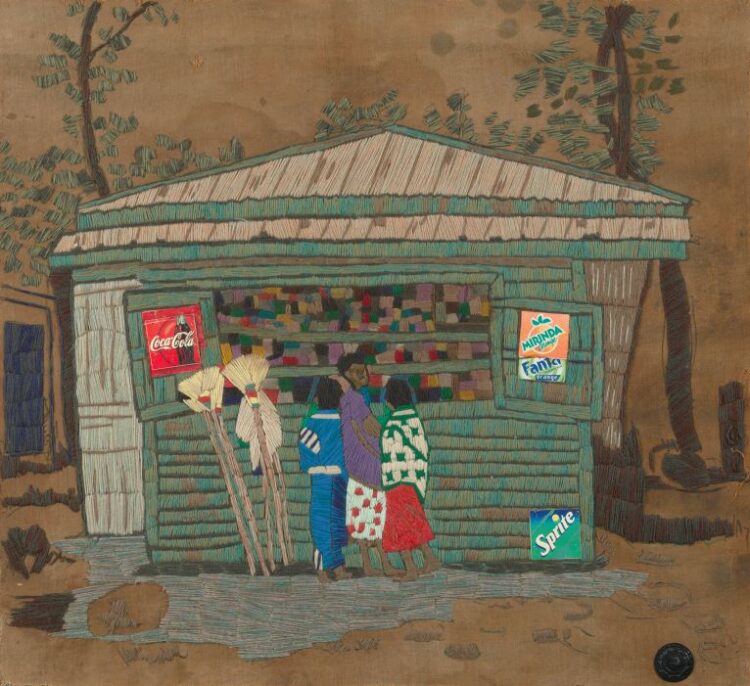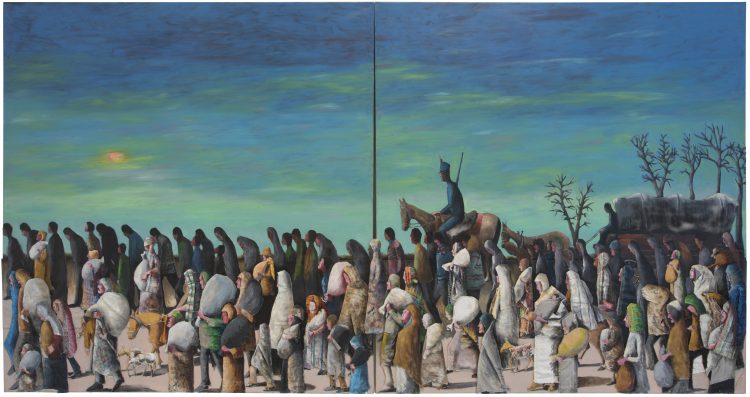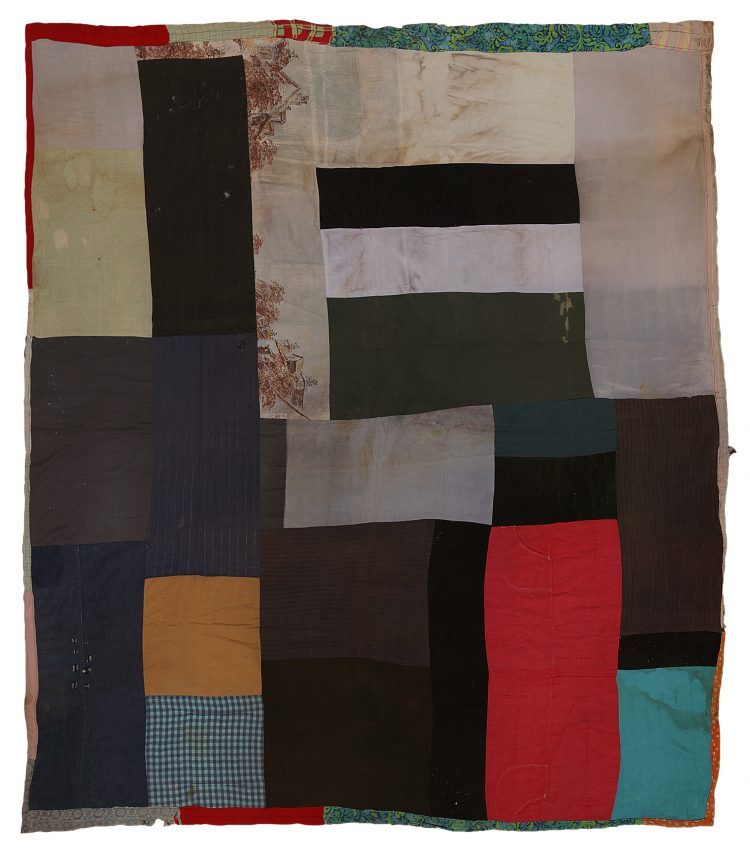Explore how artists in Pour, Tear, Carve: Material Possibilities in the Collection (on view through May 14) use various materials in different ways in their art, and how their choices convey meaning to their work.
Take a look at the works below that incorporate cloth and consider:
- • What are your strongest memories? Why have they stayed with you?
- • What role does the cloth play in evoking personal memories in these objects?

Elias Sime, Yediro Suk, 1996, Mixed media, 26 3/4 x 29 in., The Phillips Collection, Gift of Janet Stanley, 2021
Elias Sime, Yediro Suk, 1996
“I transform things I find into art. I prefer things that have touched or been in contact with people.”–Elias Sime
Sime’s art uses discarded materials—textiles, buttons, bottle caps, clothing, and computer electronics—to convey topographical compositions. For Yediro Suk, Sime’s training in the socialist realist aesthetic transforms yarn, burlap, and soda can labels into a neighborhood in Addis Ababa with a small kiosk that offers food, drinks, and everyday necessities. Many of these small-scale markets were often owned and operated by individuals from the Gurage ethnic group who relocated from southwestern Ethiopia to the capital. With the insertion of global brands and the representation of localized architecture, the work shows the shifting environment of Addis Ababa in the 1990s.

Benny Andrews, Trail of Tears, 2005, Oil on four canvases with painted fabric, mixed media, and string, 72 x 44 in., The Phillips Collection, Gift of Agnes Gund, 2019
Benny Andrews, Trail of Tears, 2005
The figures walk along a vast landscape with their heads bowed, rucksacks hoisted over their shoulders or clutched to their chests. Across four canvases, Benny Andrews uses cloth, paint, straw, and string to render the forced relocation of the Eastern Woodlands Indians (including the Cherokee, Creek, Chickasaw, Chocktaw, and Seminole tribes) from southeast America to west of the Mississippi River, in what is now known as the Trail of Tears. Juxtaposed against a blue and green background, the foregrounded figures are achieved through a technique that Andrews referred to as “rough collage,” where he incorporated cloth and other textiles, sometimes cut out of past canvases, into his painted works.
This is part of Andrews’s Migrant Series, his final major series in which he depicted three moments of mass displacement in American history—the Great Depression, the Gulf Coast after Hurricane Katrina, and the Trail of Tears. Andrews explored the transitory nature of place and how abruptly our environments can change.

Aolar Mosely, Blocks, 1955, Cotton denim, red cotton overalls, muslin and other miscellaneous fabrics, 75 x 83 in., The Phillips Collection, Partial Gift, Partial purchase from Souls Grown Deep Foundation. The Dreier Fund for Acquisitions, 2019
Aolar Mosely, Blocks, 1955
For Aolar Mosely, quiltmaking was a way of life. Her mother, Elizabeth Pettway, taught her to quilt when she was a child, a skill she passed along to some of her 17 children, including the quiltmaker Mary Lee Bendolph. Mosely was a founding member of the Freedom Quilting Bee and unlike most quiltmakers at the time, used a sewing machine to create her quilts. In Blocks, Mosley patterned found fabrics into rectangles and squares that are framed by a multicolored border. The abstracted grid draws the eye across the quilt.
